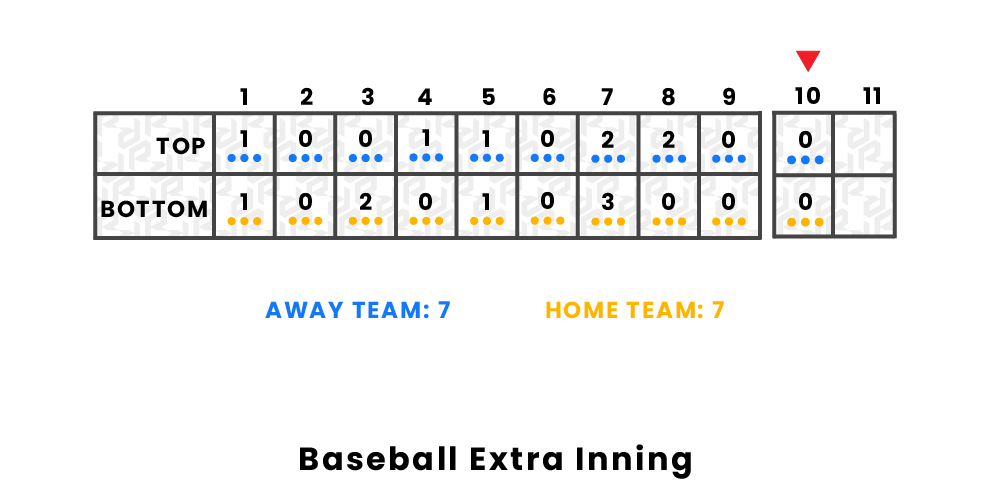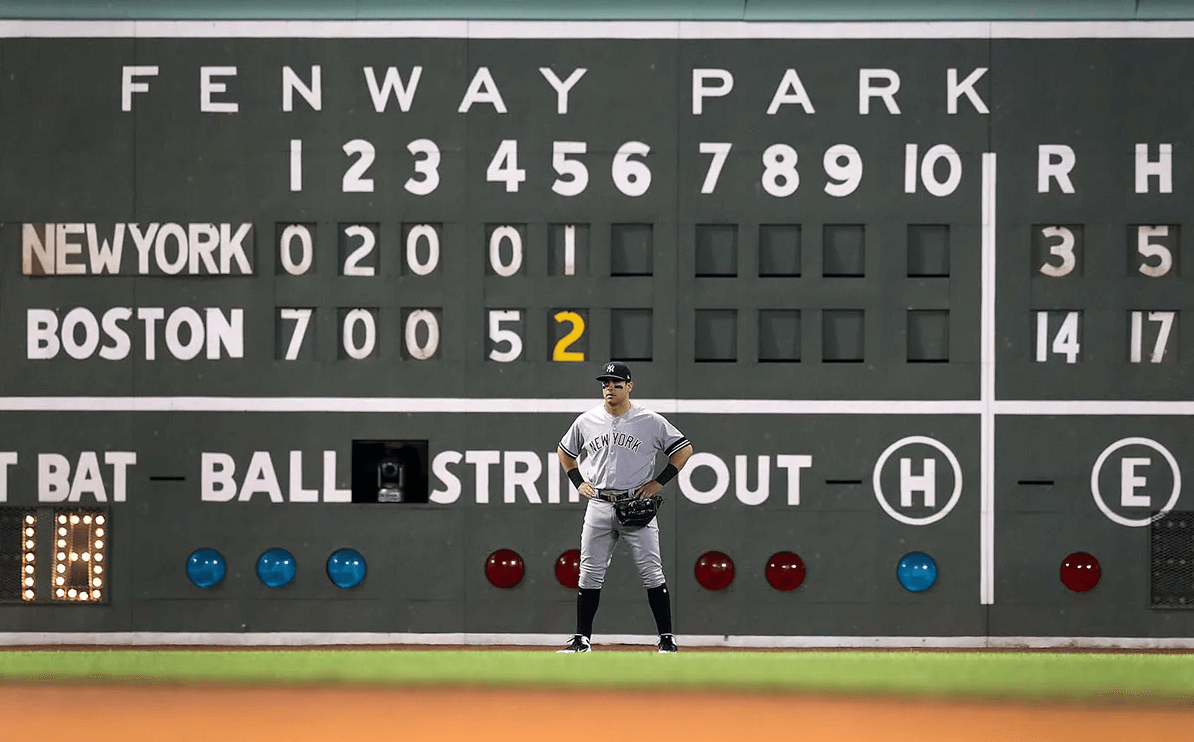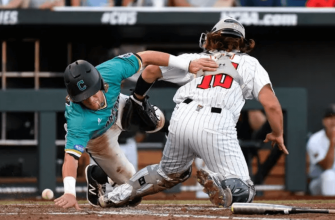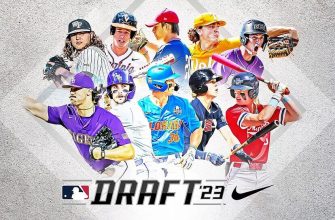College baseball is governed by the National Collegiate Athletic Association (NCAA). The NCAA Baseball Rules Committee determines the official gameplay rules. College baseball follows similar gameplay rules as professional Major League Baseball, with some slight variations.
The key aspects that impact the number of innings played are the guidelines for regulation games, game length, and championship tournament formatting. College baseball games feature two teams of 9 players each competing on a baseball diamond with four bases. Teams alternate between batting and fielding over a 9 inning game, aiming to score the most runs.
While baseball purists love the slow pace of the game, college baseball employs various rules to expedite gameplay and shorten exceptionally long matches. Understanding the nuances around innings and game length provides helpful context on what to expect when spectating college baseball.
Regulation College Baseball Games

Most regular season college baseball games follow the standard 9-inning format, as defined by the NCAA rulebook. This consists of two teams alternating at-bats for 9 innings unless the game ends early under special conditions.
According to the NCAA regulations, a regulation game is considered complete and official after at least 5 full innings have been played, or 4.5 innings if the home team is leading. This minimum number of innings allows for most games to reach an equitable conclusion even if cut short by weather or darkness. However, the full 9 innings are still considered standard for a complete game.
Barring any extra innings, shortened games, or special circumstances, a regulation NCAA baseball game at the college level will feature two teams playing 9 full offensive innings split between the top and bottom halves. This matches the traditional framework of the sport established at its highest levels.
Extra Innings

College baseball games normally last 9 innings, with 3 outs per half inning per team. However, if the game is tied after 9 innings, extra innings can be played until there is a winner. Unlike professional baseball, college baseball does not allow games to end in a tie.
In college baseball, extra inning games will continue for as many innings as needed until one team has scored more runs than the other at the end of a completed inning. There is no limit on the number of extra innings. This contrasts with professional baseball, which instituted limits on extra innings in recent years. The longest game in college baseball history was played between Texas and Boston College in 2009, lasting 25 innings over 7 hours and 3 minutes.
So while 9 innings is the standard length, college baseball games can stretch on as long as needed in extra innings to determine a winner.
Shortened Games
Most regulation college baseball games are scheduled for 9 innings. However, there are several reasons why a game may be shorter than the standard 9 innings:
-
The mercy rule can come into effect if one team is ahead by a certain number of runs after a pre-determined number of innings. For example, if one team is up by 10 or more runs after 7 innings, the game can be called.
-
Weather can shorten games if conditions become too dangerous or unplayable. For instance, heavy rain or lightning may cause a game to be called early.
-
Doubleheaders, where two games are played back-to-back on the same day, often have the second game shortened to 7 innings rather than the standard 9.
-
In tournament play, some governing bodies like the NCAA will shorten games that are tied after a certain number of innings to help keep the tournament bracket on schedule.
-
Time limits may also be imposed on games, especially if they are being televised, to fit within a broadcast window. If the time limit is reached before 9 innings are played, the game ends.
-
Darkness can shorten a game if there are no lights at the field. If visibility becomes too poor, the game will be ended early for safety reasons.
Doubleheaders
Most doubleheaders in NCAA Division 1 college baseball consist of two 7-inning games, although some conferences may still schedule 9-inning doubleheaders. The NCAA rule book allows for doubleheaders to be scheduled as two 9-inning games, a 7-inning game followed by a 9-inning game, or two 7-inning games.
The Southeastern Conference (SEC) has had a rule for years that all games in a doubleheader must be 7 innings, even before COVID-19 scheduling changes. The shorter games help manage the longer day and prevent excessive strain on pitching staffs. Other major D1 conferences like the ACC, Big 12, Pac-12, and Big Ten have adopted similar 7-inning doubleheader rules.
Some notable exceptions are the Ivy League, which still schedules all games as 9 innings, and conference tournament or NCAA regional games, which revert back to standard 9-inning lengths. But the vast majority of regular season doubleheaders in D1 college baseball are now played as two 7-inning contests.
Mercy Rule

The mercy rule in college baseball allows for a game to be ended early if one team has a significant lead late in the game. This rule aims to prevent prolonged blowouts and lopsided scores.
The specific mercy rule criteria varies between different leagues and tournaments. In NCAA Division I regular season play, if a team is leading by at least 10 runs after 7 innings, or 15 runs after 5 innings, the mercy rule can come into effect. In the NCAA tournament and College World Series, there is no mercy rule in place, so games always continue for the full 9 innings regardless of the score.
For many other college baseball associations and conferences, such as NAIA and NJCAA, a 10-run differential after 5 innings can invoke the mercy rule and end the game early. This prevents teams from having to keep playing when the outcome is essentially already decided.
The purpose of the mercy rule is to avoid needlessly prolonging games when one team has an insurmountable lead. It spares teams from having to keep playing a lost cause while getting blown out and potentially depleted of pitching options. While comebacks from large deficits are possible, they are very rare. The mercy rule therefore maintains competitiveness and makes efficient use of time.
Tournament Games
Tournament games in the NCAA College World Series do not have a regulation number of innings like regular season games. Instead, tournament games are played until there is a winner, with no ties allowed.
Once the NCAA tournament begins with the Regionals and Super Regionals, all games become elimination games. Teams continue playing games until one team has won the best-of-3 series in the Regionals and Super Regionals. This format continues in the College World Series in Omaha, where two brackets play double-elimination until the final two teams emerge. Those two teams then play a best-of-3 championship final series to determine the national champion.
With no ties allowed and no time limit, these tournament games often go into extra innings to determine a winner. Some particularly long marathon games have gone over 20 innings. The longest game in NCAA baseball tournament history went 25 innings, with Texas defeating Boston College 3-2 in a 2009 Regional matchup. Without a regulation length, teams must battle pitch-by-pitch until one emerges victorious.
Championship Finals
The championship series in the NCAA Division I Baseball Tournament has no limits on the number of innings that can be played. Teams continue playing extra innings until one team wins. This allows the championship finals to potentially go on for a very long time if the teams are evenly matched.
Some notable examples of championship games that went into extra long innings include:
-
In 1964, Minnesota and Missouri played 15 innings before Minnesota won 5-4.
-
In 2009, LSU defeated Texas 7-6 after 11 innings.
-
In 2018, Oregon State won against Arkansas 5-0 after a 12 inning marathon.
So while regular season and early round tournament games have limits, when it comes to crowning the college baseball national champion, there are no limits on innings. Teams keep battling until one emerges victorious no matter how many extra innings it takes.
Notable Long Games

Some of the longest college baseball games on record include:
-
The 2009 game between Boston College and Texas that lasted 25 innings over a period of 7 hours and 3 minutes. This still stands as the longest game in NCAA Division I history.
-
In 2018, Clemson and Georgia played for 6 hours and 33 minutes over 20 innings, which is believed to be the longest game by time in college baseball history. Clemson ultimately won 2-1.
-
In 2021, a game between TCU and Louisiana lasted 17 innings over 5 hours and 40 minutes. This set the record for the longest Super Regional game.
-
The longest 9 inning college baseball game took place in 2018 between Kennesaw State and Lipscomb, lasting 5 hours and 21 minutes.
-
Back in 1992, Creighton and Wichita State played an 18 inning marathon that lasted over 5 hours.
The longest games demonstrate the incredible endurance and perseverance required in college baseball. Teams have to fight through exhaustion as pitchers throw well over 100 pitches and everyday players are asked to go far beyond their normal workload. The marathon games become battles of attrition to see who can outlast the other.
Conclusion
College baseball games follow a standard 9 inning format, with some exceptions. In regulation games, there are 9 innings if the score is tied. Extra innings can continue until there is a winner. However, in certain situations like doubleheaders, the mercy rule, or when weather interferes, games may be shortened to 7 or 5 innings.
In tournament and championship play, games also follow the standard 9 inning format. Some exceptional college baseball games have lasted over 20 innings before producing a winner. While the 9 inning regulation length is standard, college baseball has flexibility for games to be shortened or go into extra frames depending on the situation. The number of innings ultimately depends on several factors, but the 9 inning model provides the framework for college baseball.








